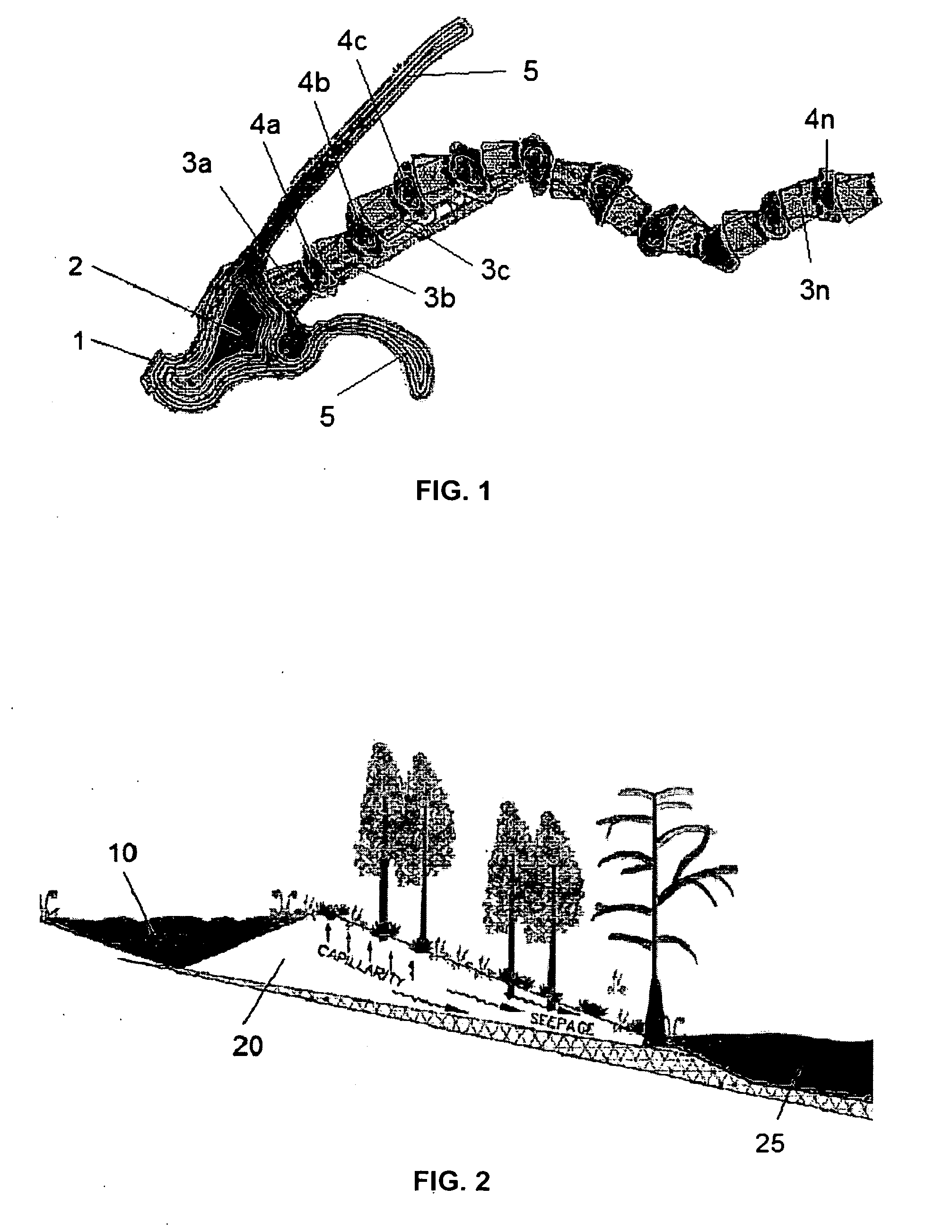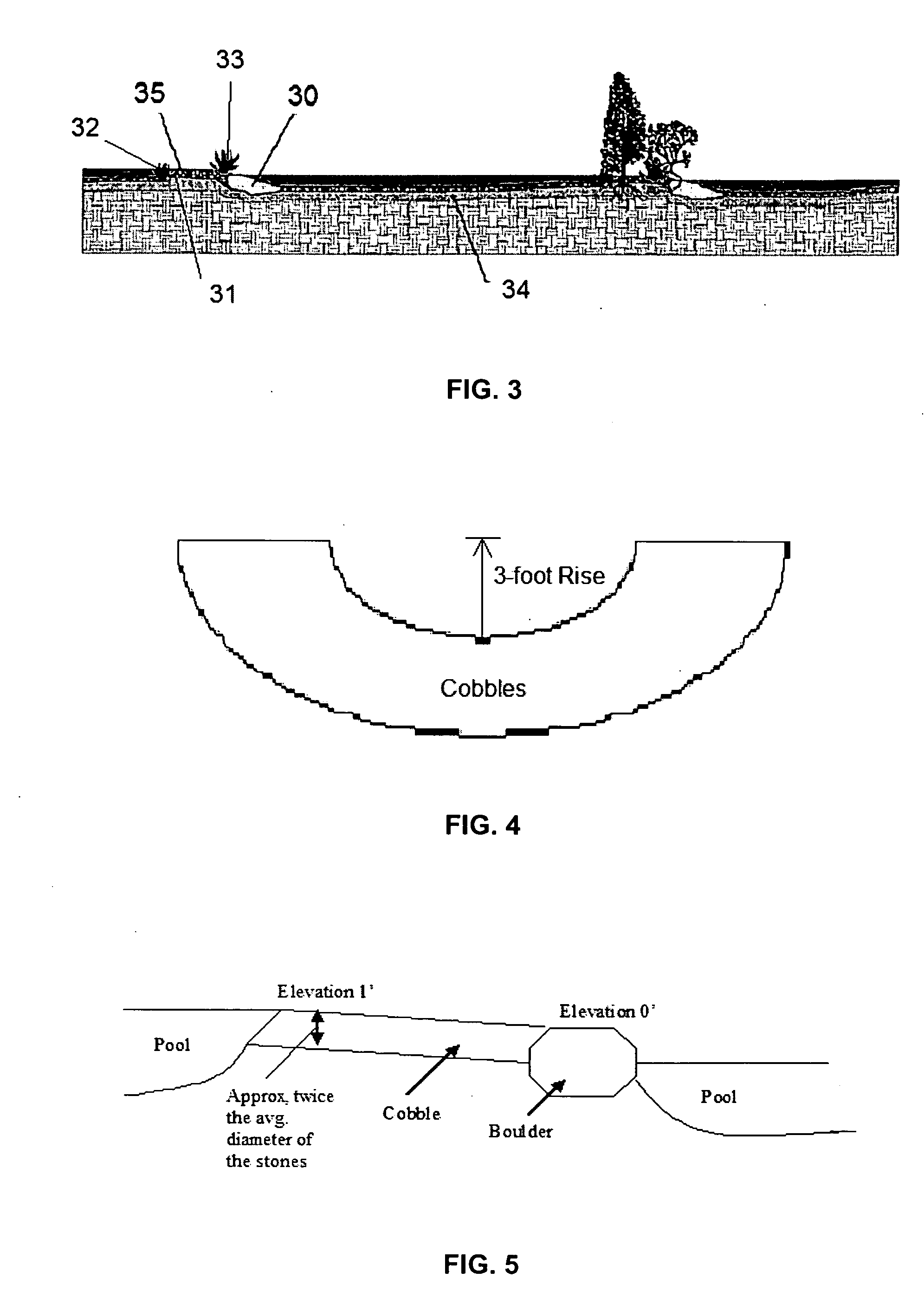Sand seepage stream and wetland restoration system and method for ecological restoration
a restoration system and wetland technology, applied in the field of ecological restoration systems and ecological restoration methods, can solve problems such as lowering water tables, dredging, and stream erratic flows, and ‘flashy’ streams with more erratic flows
- Summary
- Abstract
- Description
- Claims
- Application Information
AI Technical Summary
Problems solved by technology
Method used
Image
Examples
Embodiment Construction
[0021] Before describing exemplary, non-limiting embodiments in accordance with the present invention, a number of terms are defined to assist the reader. The terms defined are components of a seepage wetland system in accordance with the present invention.
[0022] Primary seepage reservoir—water reservoir designed to irrigate porous media (sand or gravel), spread water out along the outer regions of a project site to detain the first flush of storm water into a project site at the highest elevation possible on the given site.
[0023] Seepage Reservoirs—Sand berms are placed in appropriate positions in the landscape to capture surface and / or groundwater.
[0024] Sand Berm seepage wetland—A berm of sand designed to contain a seepage reservoir filter and exfiltrate water stored in a seepage reservoir and support plant growth, microbes, algae, fungi and macro-invertebrates.
[0025] Sand berm level spreader—A berm of sand designed to spread stormwater across a broad area to dissipate erosiv...
PUM
 Login to View More
Login to View More Abstract
Description
Claims
Application Information
 Login to View More
Login to View More - R&D
- Intellectual Property
- Life Sciences
- Materials
- Tech Scout
- Unparalleled Data Quality
- Higher Quality Content
- 60% Fewer Hallucinations
Browse by: Latest US Patents, China's latest patents, Technical Efficacy Thesaurus, Application Domain, Technology Topic, Popular Technical Reports.
© 2025 PatSnap. All rights reserved.Legal|Privacy policy|Modern Slavery Act Transparency Statement|Sitemap|About US| Contact US: help@patsnap.com



